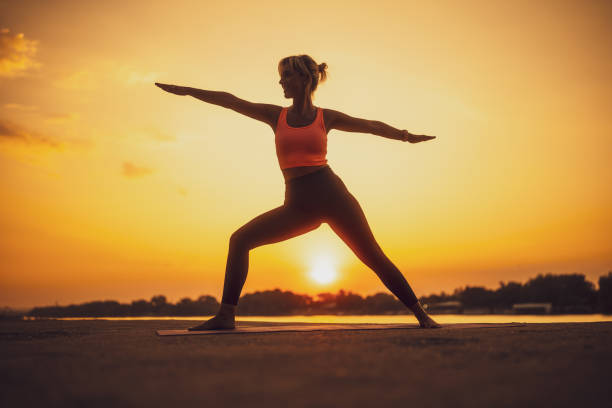Stretching is often one of the most neglected aspects of a fitness routine. Many people dedicate time to strength training and cardio workouts but fail to include stretching in their daily regimen. While it may seem like an optional step, it is actually essential for maintaining overall health and well-being. It improves flexibility, enhances mobility, and plays a key role in injury prevention. It also helps reduce muscle stiffness, improve circulation, and even promote mental relaxation by easing stress and tension.
Whether you’re an athlete aiming to improve performance or someone who simply wants to move with greater ease in daily life, it can have a significant impact. Making it a habit can lead to better posture, fewer aches and pains, and increased energy levels. In this post, we’ll take a deep dive into the many benefits of stretching and provide practical tips on how to incorporate it into your daily routine for maximum results.
What Is Stretching?
Stretching is the act of lengthening your muscles to improve flexibility and range of motion. There are different types of stretching, including:
- Static stretching – Holding a stretch for a period of time.
- Dynamic stretching – Moving through a range of motion repeatedly.
- Ballistic stretching – Using quick, bouncing movements to extend the muscles.
- PNF stretching (Proprioceptive Neuromuscular Facilitation) – A type of stretching that involves contracting and relaxing the muscles.
Each type of stretching has its benefits, and including a mix in your routine can be helpful.

The Top Benefits of Stretching
1. Improves Flexibility and Range of Motion
One of the most significant benefits of stretching is its ability to improve flexibility. Flexibility refers to how easily your muscles and joints can move through their full range of motion. When your muscles are more flexible, your movements become smoother and more effortless, making everyday tasks easier. Simple actions like bending down to tie your shoes, reaching for an item on a high shelf, or even getting in and out of your car can feel less strenuous.
For athletes, flexibility is a key factor in enhancing performance. Greater flexibility allows for more efficient movement, helping athletes run faster, jump higher, and perform exercises with better form. It also reduces muscle resistance, allowing for quicker and more powerful movements.
Over time, increased flexibility can help prevent muscle imbalances, reduce strain on joints, and lower the risk of sports-related injuries. Whether you’re an athlete or just looking to improve your daily mobility, incorporating regular stretching into your routine can lead to noticeable improvements in how your body moves and feels.
2. Reduces the Risk of Injury
Tight muscles can significantly increase the risk of strains, sprains, and other common injuries, especially during physical activity. When muscles are stiff and inflexible, they are more prone to being overstretched or torn, leading to discomfort, reduced mobility, and even long-term damage. Regular stretching helps counteract this by gradually loosening tight muscles, making them more pliable and resilient. This, in turn, enhances your body’s ability to move freely and perform daily activities or workouts without unnecessary strain.
In addition to improving muscle flexibility, stretching also boosts circulation. When you stretch, you stimulate blood flow to your muscles, delivering essential oxygen and nutrients that keep them healthy and strong. Better circulation not only speeds up muscle recovery after exercise but also helps reduce stiffness and soreness.
Over time, increased blood flow can support overall muscle function, making movements more fluid and reducing the likelihood of injury. Whether you’re an athlete or simply looking to stay active, incorporating stretching into your routine can be a crucial step in maintaining muscle health and preventing injuries.
3. Helps Relieve Muscle Tension and Soreness
After an intense workout, it’s common to experience muscle soreness and tightness. This discomfort, known as delayed onset muscle soreness (DOMS), occurs when tiny muscle fibers tear during exercise and need time to repair. Stretching after a workout plays a crucial role in speeding up this recovery process by increasing blood circulation to the muscles. Improved blood flow delivers oxygen and essential nutrients to the affected areas, helping to repair muscle tissue more efficiently and reducing inflammation.
Stretching also helps to alleviate stiffness by keeping muscles loose and preventing them from tightening up after exercise. This makes it easier to move without discomfort, allowing you to maintain an active lifestyle without being slowed down by post-workout soreness. Additionally, incorporating stretching into your cooldown routine can promote relaxation, reduce muscle tension, and enhance overall flexibility. By dedicating just a few minutes to stretching after exercise, you can improve recovery time, reduce stiffness, and prepare your body for your next workout with greater ease.
4. Boosts Circulation and Blood Flow
Stretching plays a vital role in promoting healthy circulation by increasing blood flow to your muscles and connective tissues. When you stretch, your blood vessels expand, allowing oxygen-rich blood to flow more efficiently throughout your body. This improved circulation helps deliver essential nutrients to your muscles, aiding in their repair and growth while also flushing out toxins and metabolic waste, such as lactic acid, that can build up during physical activity.
Better circulation not only supports muscle recovery but also reduces overall muscle fatigue. When your muscles receive a steady supply of oxygen and nutrients, they can function more efficiently and endure longer periods of activity without tiring as quickly. This is especially beneficial for athletes, fitness enthusiasts, and even individuals who spend long hours sitting or standing throughout the day.
Additionally, enhanced blood flow contributes to better cardiovascular health, increased energy levels, and improved overall well-being. By making stretching a regular habit, you can help keep your muscles strong, your body energized, and your circulation at its peak performance.
5. Enhances Posture and Alignment
Poor posture is a common issue that can lead to a variety of health problems, including chronic back pain, neck stiffness, headaches, and even breathing difficulties. When you slouch or sit in one position for long periods, certain muscles become tight while others weaken, pulling your body out of its natural alignment. Over time, this imbalance can place extra strain on your spine, shoulders, and hips, leading to discomfort and restricted movement.
Incorporating regular stretching into your routine is one of the most effective ways to correct and prevent poor posture. Stretching helps lengthen tight muscles that contribute to misalignment, such as the chest, hip flexors, and lower back, while also strengthening the muscles that support good posture, like the core and upper back. For individuals who spend long hours sitting at a desk, stretching the back, shoulders, and hips can help relieve tension, improve spinal alignment, and reduce stiffness.
By making stretching a daily habit, you can maintain better posture, reduce pain, and even enhance your breathing by allowing your lungs to expand more fully. Whether you work at a desk, drive for long periods, or simply want to stand taller with more confidence, stretching is a simple yet powerful way to support spinal health and overall well-being.

6. Reduces Stress and Promotes Relaxation
Stretching isn’t just beneficial for your body—it also has a powerful impact on your mental well-being. Engaging in regular stretching helps release endorphins, the body’s natural “feel-good” hormones that promote relaxation and reduce stress. These endorphins work to improve your mood, increase feelings of happiness, and even help combat anxiety and mild depression. This is why stretching is often incorporated into yoga and meditation practices, which focus on the connection between physical movement and mental clarity.
Beyond boosting mood, stretching also has a calming effect on the nervous system. When your muscles are tense, it sends signals to your brain that can trigger stress and discomfort. By stretching and loosening tight muscles, you help activate the parasympathetic nervous system, which is responsible for relaxation and recovery. This can lead to lower cortisol levels (the stress hormone), improved focus, and an overall sense of calm.
Additionally, deep breathing while stretching further enhances these benefits by increasing oxygen flow to the brain and muscles. This promotes relaxation and mindfulness, making it a simple yet effective way to unwind after a long day. Whether you practice gentle stretches in the morning to start your day on a positive note or incorporate them into your evening routine to relieve tension, it is a natural and accessible tool for both physical and mental well-being.
7. Supports Joint Health
Healthy joints are essential for maintaining mobility and performing everyday activities with ease. Whether you’re walking, bending, lifting, or reaching, your joints play a crucial role in supporting smooth and pain-free movement. However, as we age or engage in repetitive motions, our joints can become stiff, inflamed, or even prone to injury. This is where stretching becomes invaluable.
Regular stretching helps keep the muscles and connective tissues surrounding your joints flexible and strong. When your muscles are supple and well-conditioned, they provide better support to your joints, reducing unnecessary strain and minimizing the risk of injuries such as sprains or ligament tears. Additionally, it promotes the production of synovial fluid, a natural lubricant that helps joints move smoothly and prevents friction-related damage.
For individuals dealing with joint pain or stiffness, incorporating stretching exercises into a daily routine can provide significant relief. Gentle, low-impact stretches can help improve range of motion, reduce stiffness, and lower the risk of conditions like arthritis. It also plays a role in reducing inflammation by improving circulation, which helps flush out toxins that contribute to joint discomfort. Whether you’re an athlete, someone with an active lifestyle, or simply looking to maintain mobility as you age, making it a habit can go a long way in keeping your joints healthy, strong, and pain-free.
8. Improves Athletic Performance
Athletes of all levels, from beginners to professionals, can experience significant benefits from incorporating stretching into their training routines. It plays a crucial role in enhancing overall athletic performance by improving agility, balance, and coordination. These three factors are essential for executing quick, controlled movements and maintaining stability during high-intensity activities such as running, jumping, or changing direction rapidly. Whether you’re a runner, a weightlifter, or a team sport athlete, greater flexibility and range of motion can lead to more efficient movement patterns and reduced risk of strain or injury.
In addition to improving physical performance, it also plays a key role in muscle recovery. Intense training sessions create microscopic tears in muscle fibers, which can lead to soreness and stiffness. It helps accelerate the healing process by increasing blood circulation, which delivers oxygen and nutrients to fatigued muscles while removing metabolic waste. Faster recovery means athletes can train more frequently and at a higher intensity, allowing them to build strength, endurance, and skill without unnecessary downtime due to muscle soreness or tightness.
Moreover, it helps prevent imbalances in muscle groups, which can contribute to overuse injuries. By maintaining flexibility and keeping muscles properly aligned, athletes can achieve better posture, improved movement mechanics, and a lower risk of chronic injuries. Whether you’re looking to improve speed, power, or endurance, making it a regular part of your fitness regimen can help you perform at your best while reducing the risk of setbacks.

How to Incorporate Stretching Into Your Routine
Now that you know the benefits of stretching, it’s time to make it a habit. Here are some easy ways to add stretching to your daily routine:
- Stretch in the Morning – Start your day with gentle stretches to wake up your body.
- Warm Up Before Exercise – Do dynamic stretches before workouts to prepare your muscles.
- Cool Down After Exercise – Finish your workout with static stretching to help with recovery.
- Stretch Before Bed – Relaxing stretches before bed can help improve sleep quality.
- Take Stretch Breaks – If you sit for long periods, stand up and stretch every hour.
Tips for Safe Stretching
- Always warm up before stretching to avoid injury.
- Stretch slowly and gently—never force a movement.
- Hold each stretch for at least 15-30 seconds.
- Breathe deeply while stretching to help relax your muscles.
- Listen to your body—if something hurts, stop immediately.
Final Thoughts
Stretching is a simple yet powerful way to improve your health. It helps with flexibility, prevents injuries, and even reduces stress. Whether you are an athlete or just want to feel better in daily life, adding stretching to your routine can make a big difference.
Start with just a few minutes of stretching each day, and you’ll soon notice the benefits. Your body will feel more relaxed, your movements will be smoother, and your overall well-being will improve. So, take a moment to stretch today—you’ll be glad you did!
Would you like help creating a stretching routine that fits your needs? Let us know in the comments!

